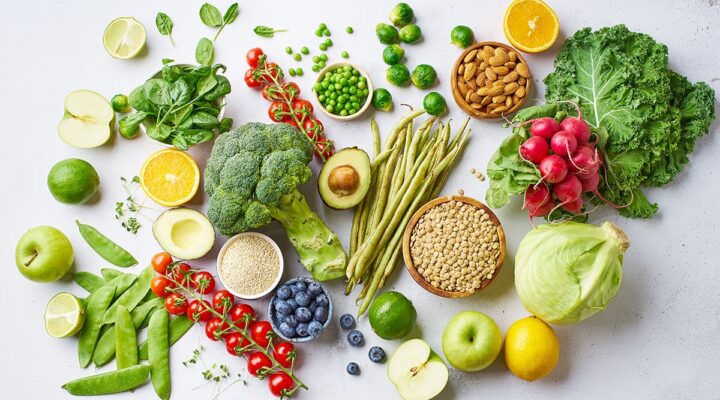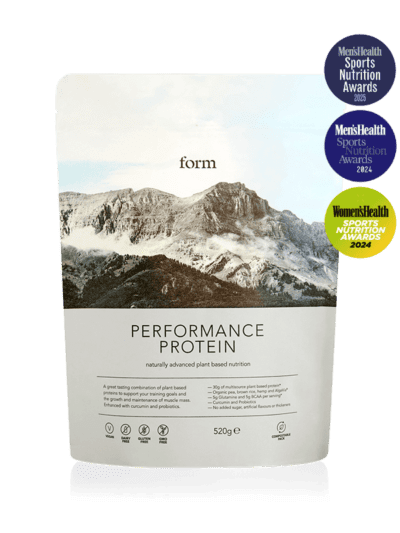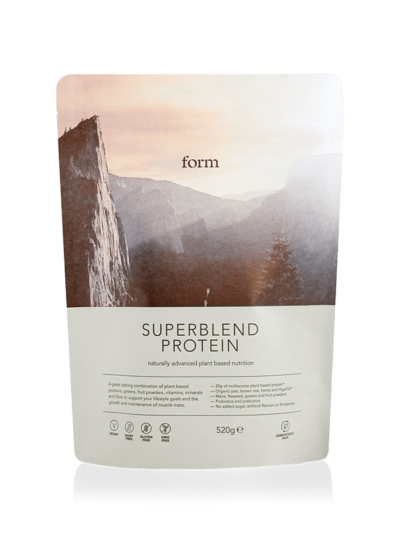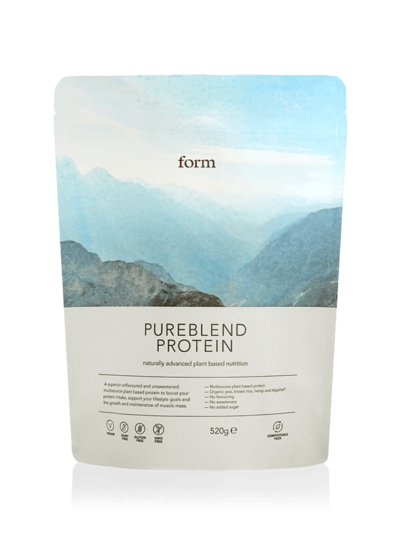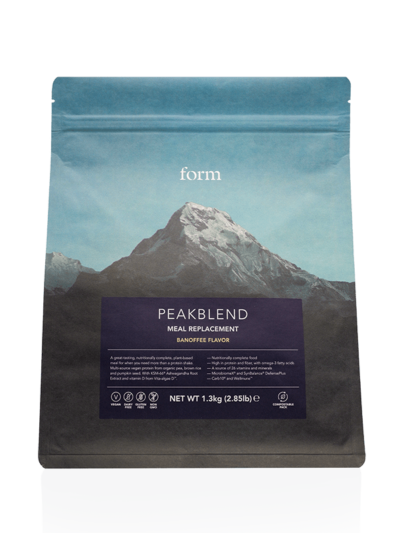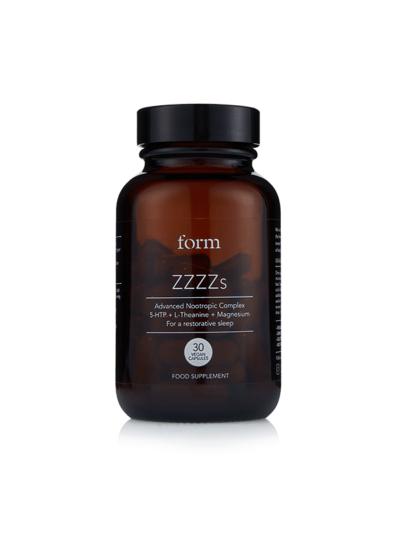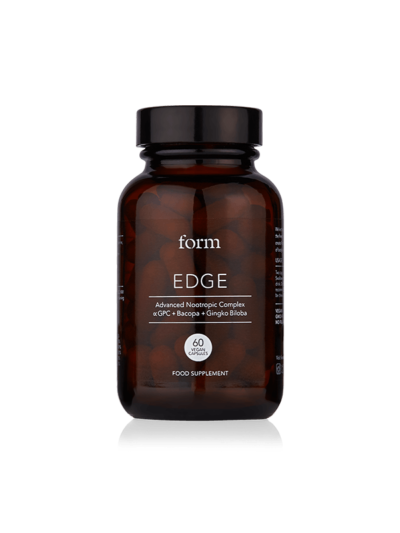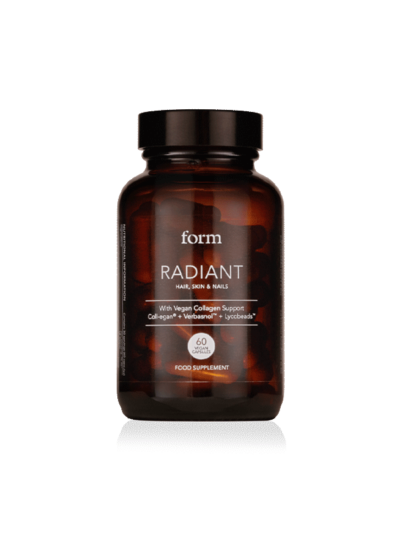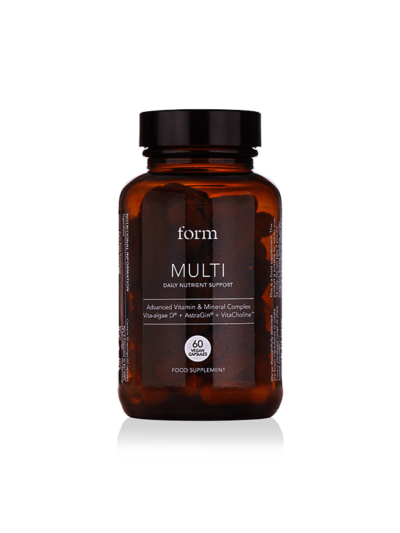From Enough to Optimal Protein: Why the Difference Matters
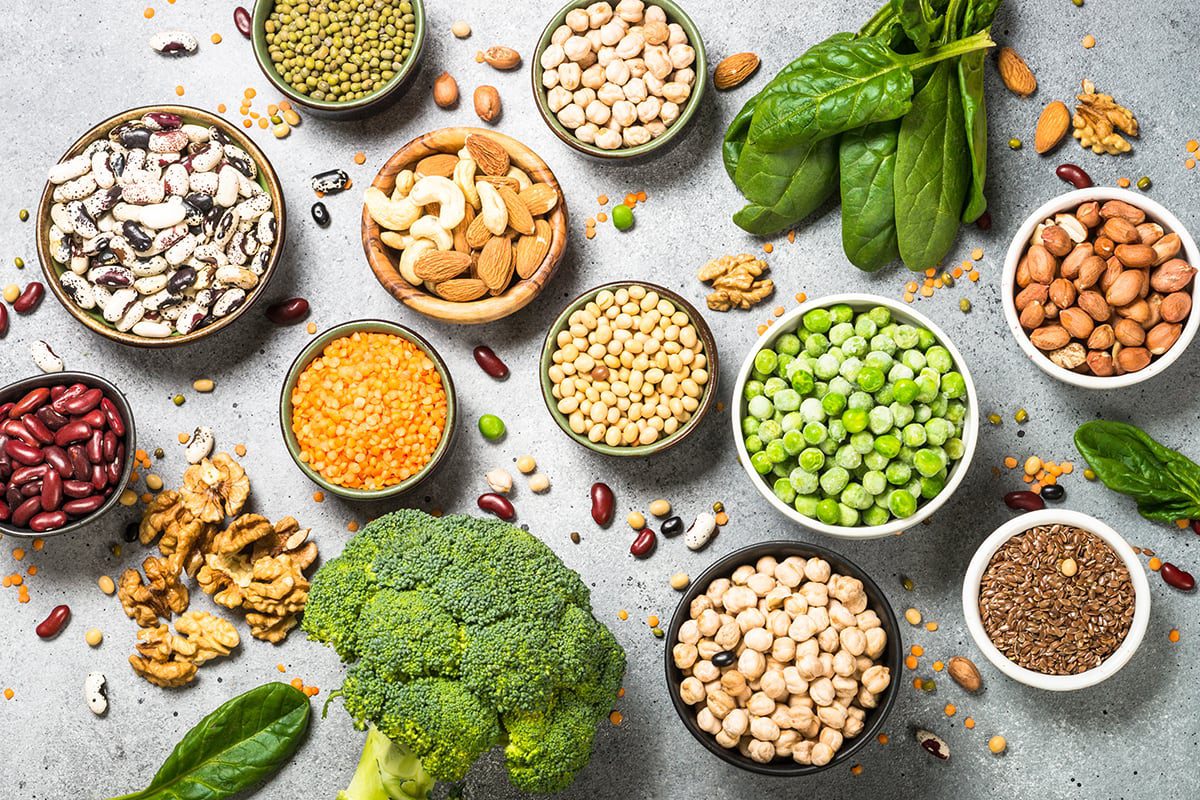
Most of us are taught to think about protein in terms of minimums, just enough to avoid deficiency. But if you want to thrive rather than merely survive, it is time to rethink what optimal protein intake really means.
In this guide, we unpack the science behind protein requirements, reveal why traditional guidelines fall short, and share an evidence-based approach to hitting the right targets. Whether you are plant-based, training hard, or simply aiming to age healthily, moving from minimums to optimal ranges can transform your energy, recovery, and long-term wellbeing.
The Origins of Protein Guidelines: Why They Miss the Mark
The Recommended Dietary Allowance (RDA) for protein is 0.8 grams per kilogram of body weight per day. However, this figure was never intended to define what is optimal. Instead, it was designed decades ago as the minimum required to prevent deficiency in sedentary adults (1).
This number was derived from nitrogen balance studies, which compare nitrogen intake (from dietary protein) to nitrogen output (mainly in urine and faeces). While innovative at the time, this method has serious limitations:
- Inaccurate nitrogen loss estimates. Nitrogen is also lost through sweat, skin, hair, and nails, which are difficult to measure. As a result, true protein requirements were underestimated (2).
- Short study durations. Many nitrogen balance trials lasted only a few days. The body can adapt to temporarily low intake, masking true needs.
- Adaptation effect. When protein intake is insufficient, the body downregulates protein-dependent processes, such as muscle protein synthesis or immune activity. On paper, this looks like “balance,” but in reality it reflects an under-fueled system.
Key takeaway: meeting the RDA ensures you avoid deficiency, but it does not guarantee you are optimally nourished. Nitrogen balance may show you are not wasting muscle, but it says little about whether you are maintaining muscle mass, building new tissue, recovering effectively, or supporting broader aspects of metabolic and immune health.
What the New Science Shows: Tracer Studies and Muscle Protein Synthesis
Modern research has moved beyond nitrogen balance, using amino acid tracer studies and direct measures of muscle protein synthesis (MPS). These methods provide far more insight into how protein intake supports muscle repair, growth, and health.
What we now know:
- MPS per meal has a ceiling, but it depends on time measured. In younger adults, studies often report that ~0.24 g/kg of protein per meal maximises MPS, but these measurements are typically taken over 3-4 hours (3). If you extend measurement to 12 hours, additional gains are seen. This suggests larger “feast-style” doses can still be effective if followed by a longer fasting window, which may be relevant for time-restricted feeding or intermittent fasting.
- Daily intake is higher than the RDA. Distributing ~0.4 g/kg per meal across 3-4 meals yields ~1.6 g/kg/day. Evidence suggests benefits extend up to ~2.2 g/kg/day (4), (5).
- Older adults need more due to anabolic resistance. This term describes the reduced ability of muscles to take up amino acids and glucose and convert them into new proteins. It stems partly from loss of muscle mass, but also from diminished metabolic activity within muscle tissue. As a result, older adults often need ~0.4-0.6 g/kg per meal to maximise MPS (6).
Real-world implications: people who consistently eat within the 1.6–2.2 g/kg/day range maintain more muscle during weight loss, gain more during training, recover faster, and enjoy better health outcomes over time.

Beyond Muscle: Why Protein Supports Healthy Ageing
Protein is not just for athletes. It is essential for healthy ageing and long-term resilience.
- Muscle mass and survival. Low muscle mass and poor strength are strongly linked to higher mortality risk (7), (8). Low fitness is a stronger predictor of early death than traditional risk factors such as smoking or hypertension. Maintaining muscle through adequate protein intake and exercise dramatically lowers risk.
- Immune, organ, and metabolic health. Amino acids from protein build not only muscle, but also enzymes, hormones, and immune cells. Adequate protein supports wound healing, immune resilience, and metabolic function (9).
- Ageing paradox. Despite increased need, older adults often eat less protein. Up to half of women over 70 fail to meet even the RDA (9). Reduced appetite, chewing difficulties, and lower food intake contribute to this shortfall.
High Protein Intakes: How Much Is Too Much?
Concerns about high-protein diets, especially kidney health, are common. But the evidence consistently shows that higher intakes are safe for healthy people.
- Extreme intakes tested. Resistance-trained men consumed ~4.4 g/kg/day for 8 weeks with no adverse changes in health markers such as kidney function, liver enzymes, blood lipids, or body composition. (10).
- One-year trial. At ~3.3 g/kg/day for 12 months, participants experienced no harm to kidney or liver function, or to blood lipids (11).
- Improved body composition. At ~3.4 g/kg/day, subjects gained lean mass and lost fat without negative health outcomes (12).
Kidney health clarified: most studies linking protein to kidney decline are in patients with existing chronic kidney disease (CKD). In healthy people, kidneys adapt to higher filtration loads without long-term damage (13). Reviews confirm intakes up to ~2.5-3 g/kg/day are safe (14), (15).

Optimising Protein Intake on a Plant-Based Diet
Getting enough high-quality protein on a plant-based diet is absolutely achievable with variety and planning. You do not need to combine complementary proteins at each meal, as once thought. Instead, focus on total daily variety.
- Choose diverse protein sources. Soy foods like tofu, tempeh, and edamame are complete proteins. Lentils, chickpeas, beans, quinoa, buckwheat and hemp contribute to a robust amino acid profile (16). For practical inspiration, see our roundup of the best vegan protein sources.
- Spread intake across meals. Aim for 25-40 g per meal, across 3-4 meals per day. This supports muscle protein synthesis and recovery (9).
- Use supplementation strategically. Plant-based protein powders, provide a convenient way to cover gaps, particularly post-training (17).
- Benefit from nutrient density, with a caveat. Many plant proteins come with fibre, antioxidants, and micronutrients that support cardiovascular and gut health. Replacing animal protein with plant protein is linked to lower chronic disease risk (16). The trade-off is that plant proteins are less energy-dense, meaning you often need to eat a higher bulk of food to reach the same protein intake.
How to Calculate Your Optimal Protein Intake
A simple formula gives you your daily protein target:
Body weight (kg) × 1.6-2.2 = grams of protein per day
For example, if you weigh 68 kg (150 lbs), your optimal range is 109–150 g/day (4), (5).
- Use the higher end (≈2.0–2.2 g/kg) if you are very active, dieting, older, or plant-based.
- Use the lower end (~1.6 g/kg) if you are less active, have higher body fat, or are just starting with exercise.
Remember, these numbers reflect what is optimal, not the bare minimum.
Is Protein Timing Important?
Yes. When you eat protein is almost as important as how much.
- Even distribution works best. Spreading protein evenly across meals leads to greater total muscle protein synthesis than skewing most intake to dinner (18).
- Pre-sleep protein is effective. Consuming 30-40 g of protein before bed enhances overnight synthesis and recovery (19). For evening meals or snacks, a plant protein that digests more gradually, such as soy, can provide a steady release of amino acids overnight. Blends of pea and rice protein are also valuable because they supply a complete amino acid profile and support recovery through the night.
If faster delivery is needed, for example after late-night training, more rapidly absorbed plant protein isolates such as pea protein isolate are ideal. These options are higher in leucine and lower in fibre and fat, allowing amino acids to reach the bloodstream more quickly and stimulating muscle protein synthesis sooner.
Example for a 70kg person aiming for ~130g/day:
- Breakfast: 30g
- Lunch: 35g
- Snack: 25g
- Dinner: 40g
Key Takeaways
- The RDA is a baseline, not a target.
- 1.6-2.2g/kg/day consistently supports muscle, recovery, and longevity.
- Older adults and plant-based eaters should aim for the higher end.
- Intakes up to 2-3x the RDA are safe for healthy individuals.
- Plant proteins can fully support your needs when varied and distributed across meals.
Final Thoughts
Protein needs to be thought of in terms of what supports optimal health, not just avoiding deficiency. The RDA of 0.8g/kg per day represents the minimum to prevent deficiency in sedentary adults, but for most people, especially those who are active or ageing, this is unlikely to be sufficient for strength, recovery, and long-term health.
In practice, many adults already consume more than the RDA, averaging around 1.2g/kg per day in the UK. However, this is still below the levels consistently shown to be most beneficial. Older adults in particular are at greater risk of falling short, despite having higher requirements due to anabolic resistance and natural muscle loss with age.
Protein is more than muscle fuel, it is a cornerstone of resilience, healthy ageing, and performance. Whether your goal is to train harder, age well, or simply feel more energetic, optimising protein intake is one of the smartest nutrition choices you can make.
References
- Subcommittee on the Tenth Edition of the Recommended Dietary Allowances. Recommended Dietary Allowances. National Academies Press; 1989. doi: 10.17226/1349
- Miller DS, Payne PR. Assessment of protein requirements by nitrogen balance. Proc Nutr Soc. 1969;28(2):225–233. doi: 10.1079/pns19690043
- Moore DR, Robinson MJ, Fry JL, et al. Ingested protein dose response of muscle protein synthesis after resistance exercise in young men. Am J Clin Nutr. 2009;89(1):161–168. doi: 10.3945/ajcn.2008.26401
- Morton RW, Murphy KT, McKellar SR, et al. Effect of protein supplementation on resistance training-induced gains: a meta-analysis. Br J Sports Med. 2018;52(6):376–384. doi: 10.1136/bjsports-2017-097608
- Nunes EA, Colenso-Semple L, McKellar SR, et al. Protein intake to support muscle mass and function: a systematic review and meta-analysis. J Cachexia Sarcopenia Muscle. 2022;13(2):795–810. doi: 10.1002/jcsm.12922
- Nowson C, O’Connell S. Protein requirements for older people: a review. Nutrients. 2015;7(8):6874–6899. doi: 10.3390/nu7085311
- Kokkinos P, Faselis C, Samuel IBH, et al. Cardiorespiratory fitness and mortality across age, race, and sex. J Am Coll Cardiol. 2022;80(6):598–609. doi: 10.1016/j.jacc.2022.05.031
- Mandsager K, Harb S, Cremer P, et al. Association of cardiorespiratory fitness with long-term mortality among adults undergoing exercise treadmill testing. JAMA Netw Open. 2018;1(6):e183605. doi: 10.1001/jamanetworkopen.2018.3605
- Bauer J, Biolo G, Cederholm T, et al. Evidence-based recommendations for optimal dietary protein intake in older people: PROT-AGE Study Group. J Am Med Dir Assoc. 2013;14(8):542–559. doi: 10.1016/j.jamda.2013.05.021
- Antonio J, Peacock C, Ellerbroek A, et al. A high protein diet (4.4 g/kg/d) in resistance-trained individuals. J Int Soc Sports Nutr. 2014;11:19. doi: 10.1186/1550-2783-11-19
- Antonio J, Ellerbroek A, Silver T, et al. A high protein diet has no harmful effects: a one-year crossover study in resistance-trained males. J Nutr Metab. 2016;2016:9104792. doi: 10.1155/2016/9104792
- Antonio J, Ellerbroek A, Silver T, et al. A high protein diet (>3 g/kg/d) combined with resistance training improves body composition in healthy adults. J Int Soc Sports Nutr. 2015;12:39. doi: 10.1186/s12970-015-0100-0
- Knight EL, Stampfer MJ, Hankinson SE, et al. The impact of protein intake on renal function decline in women: a prospective study. JAMA. 2003;289(24):3243–3249. doi: 10.1001/jama.289.24.3243
- French SJ, Kanter M, Maki KC, et al. The harms of high protein intake: conjectured but unproven. Am J Clin Nutr. 2025;122(1):9–16. doi: 10.1016/j.ajcnut.2025.05.002
- Halbesma N, Bakker SJL, Jansen DF, et al. High protein intake associates with cardiovascular events but not with loss of renal function. J Am Soc Nephrol. 2009;20(8):1797–1804. doi: 10.1681/ASN.2008060649
- Mariotti F, Gardner CD. Dietary protein and amino acids in vegetarian diets: a review. Nutr Rev. 2019;77(11):579–593. doi: 10.1093/nutrit/nuz061
- Messina M. Soy and health update: evaluation of the clinical and epidemiologic literature. Nutrients. 2016;8(12):754. doi: 10.3390/nu8120754
- McKenna CF, Salvador AF, Hughes RL, et al. Protein distribution and gut microbiota during resistance training: a randomized trial. Am J Physiol Endocrinol Metab. 2021;320(5):E900–E913. doi: 10.1152/ajpendo.00574.2020
- Trommelen J, van Loon LJC. Pre-sleep protein ingestion to improve recovery and adaptation to exercise training. Nutrients. 2016;8(12):763. doi: 10.3390/nu8120763






